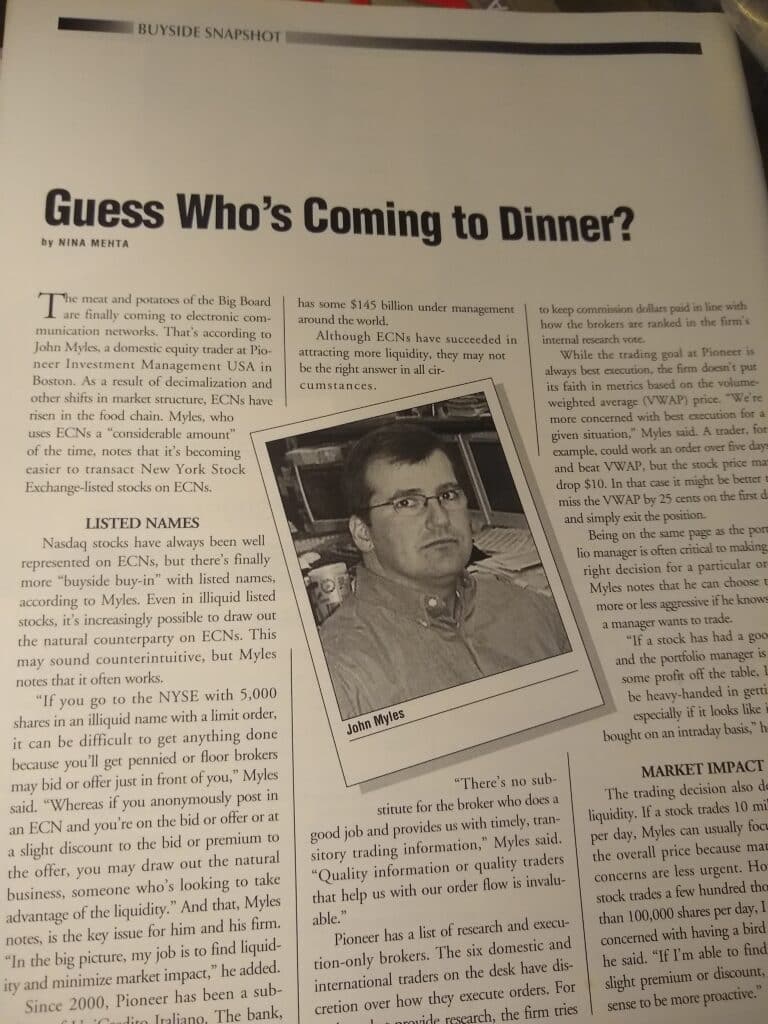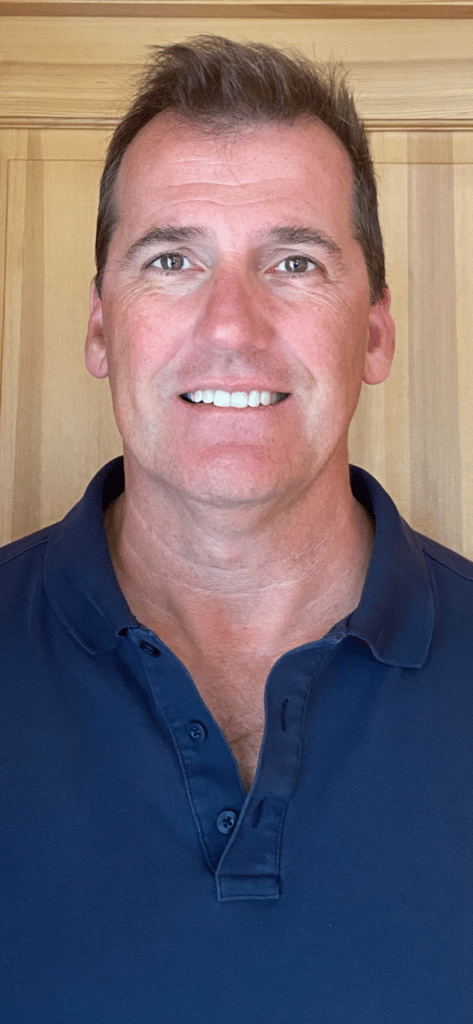FLASH FRIDAY is a weekly content series looking at the past, present and future of capital markets trading and technology. FLASH FRIDAY is sponsored by Instinet, a Nomura company.
When last sighted in the pages of Traders Magazine in 2004, John Myles, then an equity trader at Pioneer Investment Management, was talking about how it was becoming easier to trade NYSE-listed stocks on electronic communications networks (ECNs).

Flash forward 18 1/2 years, and Myles is still in the game, as Partner and Head Trader at Westfield Capital Management, a $13 billion asset manager based in Boston.
Traders Magazine caught up with Myles, now 54, to learn more.
Briefly discuss your career trajectory?
I started in the open outcry pits of the Chicago Mercantile Exchange (CME) as a runner, then clerked in options pits before moving to currency arbitrage. Then I moved to floor trading on the Boston Stock Exchange (BSE) and the virtual Cincinnati Stock Exchange (CSE). In 2002 I moved to the buy side for Pioneer Investments, trading predominantly mid- and large-cap domestic stocks. After five years I moved to Delta Partners, a global long-short equity hedge fund. In the middle innings of the global financial crisis I accepted a job at Westfield Capital Management, to trade domestic equities and derivatives. I was promoted to head of the desk after five years and later became a partner.

How has the job of a buy-side trader evolved over the course of your career?
Twenty-plus years ago a trader would likely begin and end an order with a single high touch broker. There were exceptions, but that was the routine. Now, the trader may control pace and aggression and limit themselves through algorithms, crossing networks and high touch relationships – four or more destinations per ticket per is normal. A solid partnership with high touch desks is still essential to outperform, but every option has its place.
What has changed the most?
I’d have to say one, technology, as there are lots of ways to get things done, and two, the speed and magnitude of market moves.
What has changed the least?
While there are fewer traders around, ours is still a relationship business; partnerships and integrity are paramount.
What is Westfield Capital Management all about – what is the profile of the trading desk?
Westfield is primarily a domestic active growth manager with products covering the capitalization spectrum. We have three traders that focus on specific sectors, and one program trader. We find that sectorization helps the traders develop a better understanding of the space they are assigned to, a solid relationship with desk specialists in the brokerage community, and a closer relationship with their analysts.
As a firm of Westfield’s size, we value natural liquidity. Traders must resist participating for the sake of getting something done. We know the best way to avoid adverse price momentum is to minimize the time you are in the marketplace; spreading even the smallest order can hurt performance. We try to be patient and put a premium on block volume.
What do you like most about being a buy-side trader?
I work with smart folks. I love watching an idea from its infancy to its expression as a position. I find it rewarding when I can add value tactically building or exiting a position. The constant change – to be good you must be engaged, attentive and flexible.
What’s your least favorite part of the job?
Interacting with predatory high frequency trading (HFT). I have adapted, but I still feel like there is something intrinsically wrong with their role. I don’t see how their existence contributes to a fair and orderly marketplace or price discovery.
How will the future role of the buy-side trader evolve?
Today’s buy-side trader does more than they did 20 years ago, they often trade different securities/instruments, or add value as technicians. The successful trader of the next generation will be part inventory manager, part consultant, and part strategist.
What’s in your future?
I’m not going anywhere – at least not voluntarily! I find it fulfilling. I still have a fastball and I’m working on the off-speed stuff for career longevity.







